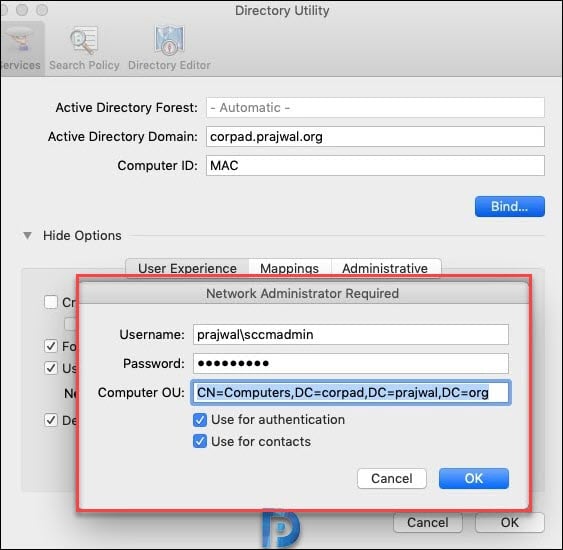

Os x server active directory mac os x#
In Mac OS X Server we use Workgroup Manager to administer user, user group, computer, and computer accounts. NOTE: The acronym MCX in Apple nomenclature stands for Managed Client for OS X). Your best bet for enabling these configuration options on your entire fleet of Mac computers is to create a master OS disk image that contains these settings and then use that master image to deploy Mac OS X to your other computers. What the MCXLoginScripts and MCXScriptTrust properties do, in essence, is configure the client to trust the Mac OS X Server computer and to enable it to receive login script files from same.


What we are doing here is establishing two system-level defaults. Preparing Mac clients for enterprise login scripts Sudo defaults write MCXScriptTrust -string Authenticated Sudo defaults write EnableMCXLoginScripts -bool TRUE
Os x server active directory download#
In order for your Mac OS X client computers to download and interpret your Mac OS X Server-based login scripts, we need to run the following commands on each client from a root Terminal session: Making a shell script executable Preparing Your Client Computers ^ To do this, issue the following command from Terminal: The catch here is that we need to be sure to mark our shell scripts as executable prior to deployment by Mac OS X Server. ScriptGUI: Graphical shell script authoring tool.: Mac OS X Management Custom Shell Script Library.sh by default.įor advice on creating shell scripts in the Mac environment, check out these resources: Verifying Open Directory server status Preparing Your Login Scripts ^Īs we discussed in the previous article in this series, one option for defining your Mac-based login scripts is to use UNIX shell script files. You can verify that your Open Directory Master is online and functional by opening Server Admin and selecting Open Directory from your service list. Essentially, Mac OS X Server Snow Leopard is a pastiche of several tried-and-true open source packages: there is OpenLDAP (Open Directory) for directory services, Apache for Web server functionality, and so forth. You will be pleased to know that you can apply the vast majority of your Active Directory skills to the Mac’s Open Directory environment. Hands-on: Setting up Mac OS X Open Directory.How-to: Understanding Mac OS X Open Directory.In the meantime, check out these helpful resources: The specific clickthroughs for deploying Open Directory are outside the scope of this piece. More to the point, we must configure the Mac server as an Open Directory Master. As a necessary prerequisite, we need to have a Mac set up with Mac OS X Server Snow Leopard.


 0 kommentar(er)
0 kommentar(er)
